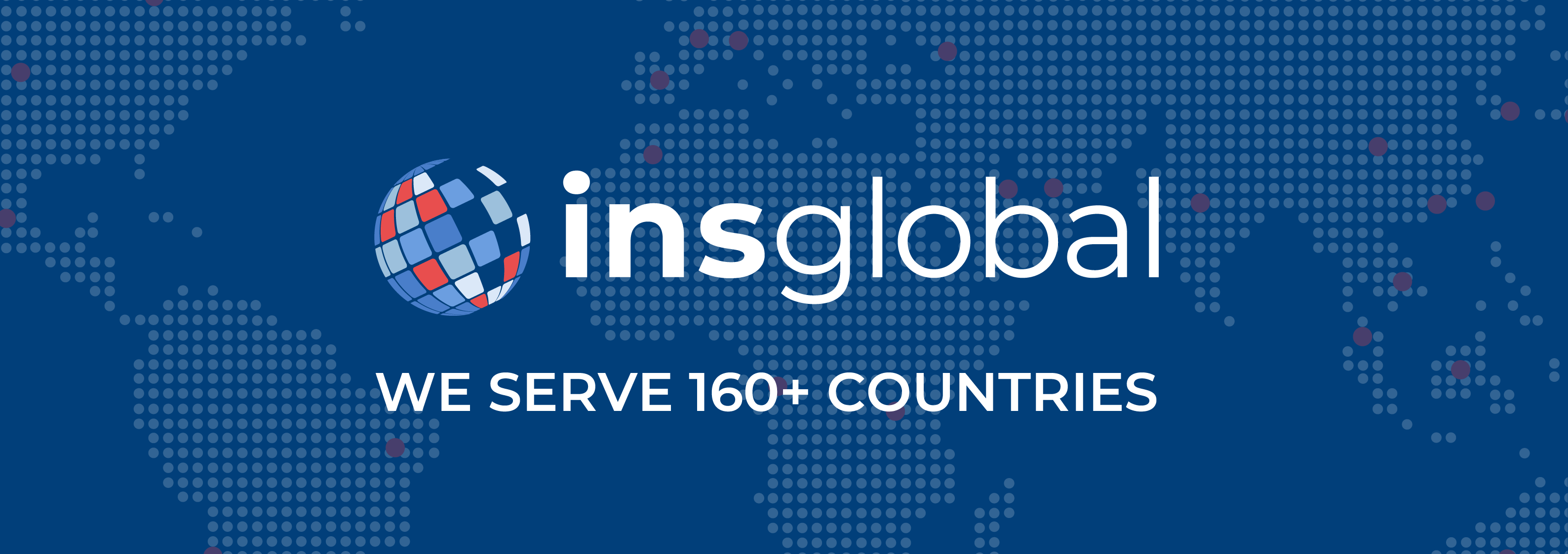Why Employee Recognition Matters
Every business wants engaged, productive, and loyal employees. Yet too many overlook one of the most cost-effective and impactful employee engagement strategies available: recognition. Whether it’s a casual shoutout or a company-wide reward, employee recognition ideas reinforce a company’s dedication to the people that matter most to a company’s success.

The Link Between Recognition and Motivation
It’s no secret that motivated employees perform better, in fact studies show that properly motivated employees remain far more motivated along their entire employment journey. But motivation doesn’t appear out of thin air. Instead, it is cultivated through continuous, meaningful feedback, sometimes critical, sometimes positive.
A well-timed “thank you” can energize an employee for weeks, or virtual team appreciation activities, like online shoutouts or remote gift deliveries, remind your workforce that their effort matters, no matter where they are.
This is because when leaders and peers acknowledge performance, they spark pride and ownership. Properly motivated employees want to go above and beyond because they feel valued, not because they’re chasing a paycheck.
Impact on Retention, Engagement, and Productivity
Recognition directly impacts employee retention and engagement levels. Employees who feel appreciated are far less likely to seek new roles elsewhere or fall prey to issues like burnout (in same cases, motivation sees a decrease of 73% according to one study), or increased absenteeism. In fact, teams that prioritize recognition enjoy higher morale, better collaboration, and greater productivity.
From a business standpoint, higher engagement leads to stronger performance across the board. And when tied to company goals or values, recognition becomes a tool for both reinforcing culture and alignment as well as making goals and targets a public endeavor.
That’s why investing in recognition, especially low-cost employee rewards, can yield big returns without huge investments of time or resources.
What This Guide Covers
INS Global knows that recognition goes beyond simple praise. Whether it’s ensuring our own teams understand the value they bring as individuals, or helping our clients to keep their workforces happy and engaged around the world, we know that validating effort and encouraging excellence are important parts of a long-term strategy for success. However, it isn’t always enough to stick to the same old methods of employee recognition. That’s why having a few varied employee recognition ideas can keep praise impactful.
Equally, as workforces become more distributed and diverse, understanding how to motivate employees remotely and in person is key to maintaining a strong, unified culture.
This guide then covers 28 potential employee recognition ideas for a variety of situations and purposes, as well as a range of other best practices for keeping employees engaged and happy.
Everyday Gestures to Company-Wide Programs
Recognition doesn’t need to be complex or expensive. Sometimes, a sincere thank-you in a meeting holds more weight than a costly perk. To this point, this guide walks through a full spectrum of employee recognition ideas, from daily gestures to formal initiatives that scale across organizations of any size.
We’ll also explore how to make appreciation a habit by embedding recognition into your leadership style, internal communications, and HR practices.
Ideas for Remote, Hybrid, and In-Office Teams
Your team’s structure influences how you recognize achievements. In today’s digitalized office environment, remote employees don’t pass by a “wall of fame” or overhear praise in the office kitchen, so that’s why virtual team appreciation activities are essential new tools for distributed or international teams. Whether you lead in-office, remote, or hybrid groups, this guide offers practical ideas tailored to each context.
The Benefits of Employee Recognition
Boosts Morale and Team Spirit
The fastest way to lift team morale? Public praise and shared celebration. For most employees, recognition is most impactful when it’s public (though not for all, as discuss later). Equally, when employees see their peers recognized, it fosters camaraderie and a sense of group success, among other benefits.
A real culture of appreciation reduces stress, counters burnout, and turns individual wins into team victories across the board. Consistent recognition also reminds employees they’re seen and valued, which energizes the workplace atmosphere.
Reinforces Company Values and Culture
Recognition shapes behavior, so when you highlight specific actions like collaboration, innovation, or customer service, you can choose to reinforce what matters most to your organization. Over time, this molds company culture and informs new hires that company values aren’t just empty ideals but genuine group efforts. Recognition, therefore, becomes a strategic tool for aligning daily work with long-term goals.
Improves Employee Retention
It’s a simple enough fact that bears repeating: most employees who feel invisible don’t stay long. When individuals are appreciated consistently, they’re more likely to stick around, even through challenges or difficult periods. In fact, employees are 33% more likely to stick around when regularly praised or recognized. This is because recognition gives people a reason to commit, not just to the job, but to the team, the mission, and the company as a whole.
In today’s competitive market, retaining talent is essential, so the right support for employees is that which gives global businesses the tools and strategies needed to boost retention through meaningful, culturally appropriate recognition programs.
Encourages High Performance and Accountability
Recognition doesn’t just pat people on the back, it sets a bar. When teams know that excellence is noticed and rewarded, they’re more likely to aim higher. This creates a positive feedback loop of accountability and ambition that sees natural productivity boosts of as much as 71% according to some studies.
As employees begin to take ownership not just of their tasks, but of their impact, these moments fuel consistent, high-level performance.

27 Creative Employee Recognition Ideas
1. Public Shoutouts
Never underestimate the power of a few kind words in front of peers. Even highlighting someone’s effort in a meeting or Slack thread shows your team that great work is visible and remembered. That being said, this is most impactful when you make it personal, timely, and specific. Generic praise or messages that look automated often fall flat or can even negatively impact a worker’s perspective on their leadership.
It’s worth particular note that remote workers especially benefit from this kind of virtual team appreciation activity.
2. Peer-to-Peer Recognition Programs
Leaders aren’t the only ones who should give recognition, so empower your staff to spotlight one another’s achievements. Peer recognition builds a strong culture of trust and teamwork, which can be made easier by implementing tools and systems that allow for peer-to-peer recognition, even across global teams.
3. “Employee of the Month” with a Twist
Ditch the old-school trophy on the desk or picture above reception. Instead, let teams nominate their peers and add creative categories, which can even be tailored to short-term goals or projects. Categories like “Customer Hero,” “Idea Generator,” or “Collaboration Star” allow you to rotate recognition and spread it out, as well as tying it back to performance values that matter most to your company.
4. Wall of Fame (Physical or Digital)
Recognition is best when its seen, literally. This might mean using digital dashboards, internal portals, or office wall space to showcase employee wins as these physical spaces become a constant reminder that hard work is noticed without any added input required. Hybrid companies can also balance digital and in-person recognition through dynamic displays or shoutout boards.
5. Personalized Thank You Notes
Nothing beats a heartfelt message, a short note, handwritten or sent via email, creates a lasting emotional impact beyond this kind of message left on public platforms. This kind of message also shows that even personalized or private recognition doesn’t need a big budget just sincerity and effort.
6. Milestone Celebrations
Milestones deserve to be marked, so whether it’s a 5-year work anniversary, the close of a major project, or a team member’s birthday, these are moments that matter.
Recognizing milestones shows that you see your employees as more than just their roles, but that you also care about their journey and contributions. Celebrate with team-wide messages, small gifts, or shoutouts during meetings, while even remote teams can join in with virtual cards or surprise video messages.
7. Spot Bonuses or Gift Cards
Sometimes great work needs more than a thank-you, and this is where a bit of budgeting comes into play. Spot bonuses and gift cards are effective because they provide instant gratification, with amounts that can be tailored to fit the amount of praise required.
When someone stays late to fix a last-minute issue or goes above expectations on a tight deadline, a quick, thoughtful reward can be incredibly motivating. These can be physical or digital, and they’re perfect examples of low-cost employee rewards that deliver serious impact.
8. Lunch with Leadership
Access to leadership is a powerful motivator. Offering employees the chance to have lunch, whether virtually or in person, with senior executives can be a rewarding experience, especially for more ambitious employees. While it might require some scheduling and requires engagement from multiple levels, this type of action creates a unique space for recognition, mentoring, and connection, where employees can feel seen and respected at all levels of the organization.
At the same, not all employees may want this type of recognition, and senior managers or executives must buy-in to the idea fully for it to work, so this type of reward is best used situationally.
9. LinkedIn Praise Posts
Posting achievements, project wins, or anniversaries on LinkedIn or other public sites has a dual benefit, boosting both employee morale and your employer brand at the same time. It shows the world that you value your people and gives employees public credit that can enhance their careers. Plus, it reflects positively on your company culture especially if followed up with meaningful engagement in comments.
Recognition Ideas for Remote Teams
10. Virtual Applause via Video Calls
Remote meetings can feel transactional in comparison to in-person meetings where informal chats can happen much more naturally. That can make employees feel invisible online, until someone gets recognized. This might mean taking a moment in Zoom or Teams calls to highlight an achievement, offer genuine praise, or give a “round of virtual applause” which can break the monotony and reconnect remote teams emotionally. It’s quick, free, and deeply effective.
11. E-Gift Cards and Subscriptions
For remote employees, digital rewards like e-gift cards or streaming subscriptions are both a practical and appreciated gesture. They’re easy to deliver and offer instant recognition, allowing you choose options that reflect the employee’s interests or make their working situation easier, such as a coffee gift card, a wellness subscription, or even a book voucher.
These small gestures feel personalized and thoughtful, and can be used to overcome some of the challenges most commonly associated with remote work like a lack of real connectivity or downtime.
12. Surprise Deliveries (Coffee, Snacks, or Swag)
Similarly, sending a coffee kit, branded hoodie, or snack box directly to your team’s homes makes them feel connected and valued, even from afar. The key here is making them surpirises, providing small moments of unexpected breaks from the norm as these kinds of virtual team appreciation activities strengthen the sense of team identity and appreciation.
13. Celebrate in Team Newsletters or Slack Shoutouts
Internal newsletters or weekly Slack highlights are perfect vehicles for consistent recognition. Use them to feature wins, team spotlights, or birthdays, whether this is part of a regular section devoted to recognition or more case-by-case additions. Keep it visual, short, and celebratory, as, when recognition becomes part of your communications rhythm, it starts to shape your entire company culture.
14. Social Media Recognition for Remote Workers
Highlighting remote employees on your company’s social media accounts that go beyond the purely corporate helps bridge the gap between physical and digital teams.
Include a picture, a few kind words, and a mention of their recent achievements. When done right, this public form of recognition can build pride and strengthen the employee’s sense of identity within the company in a way that tactfully bridges the gap between personal and professional.
Team-Based Recognition Ideas
15. Team Retreats or Offsite Activities
Group rewards reinforce team unity. While organizing offsite retreats, activity days, or even virtual team-building events starts to become a more expensive prospect, they are important for giving teams a break while celebrating their collective efforts.
Offsite events also provide an key opportunity for informal recognition and bonding outside the work context. These shared experiences can have lasting effects on collaboration and morale, and while not everyone may wish to break down personal and professional barriers (and this should be remembered and integrated into plans), this kind of event can be extremely important in the building up of a team spirit.
16. Group Achievement Celebrations
When a department hits a big goal, don’t just congratulate the manager but remember to celebrate the entire team. Host a special meeting, deliver lunch, or send a group message recognizing everyone’s role, while acknowledging group success rewards collaboration and shared accountability while also reducing the chance that employee feel bias or hierarchy plays a role in recognition.
17. Team Lunches Sponsored by the Company
A sponsored lunch, whether ordered to the office or delivered remotely, is a simple way to say thank you. Instead of only happening around celebrations, regular hosted lunches let teams enjoy downtime together while reflecting on more general positives or a variety of recent wins. It reinforces the message that results and teamwork are appreciated at all times, not just expected when employees directly contribute to the bottom line.
18. Collaborative Goal-Based Rewards
Set team goals with a reward or variety of rewards tied directly to achievement. Whether it’s a catered lunch, a half day off, or a team outing, goal-based recognition creates shared motivation. These rewards can even be based on a tier system, leaving room for progression later and incentivizing even more success next time. More than anything, make sure the goals are clear, realistic, and align with broader company objectives.
Personalized and Low-Cost Recognition Ideas
19. Flexible Work Hours or Extra PTO Days
Sometimes the best reward is time, so offering extra paid time off or flexible hours in recognition of performance is an easy way to show trust and appreciation. It sends a powerful message: “We see your effort, and we want to give back.” These low-cost rewards have a high perceived value and enhance employee well-being, and PTO is increasingly expected as an employee benefit in any case.
20. “You Choose” Perks (Desk Upgrade, Course, Book, etc.)
Try offering a menu of perks that employees can choose from. This could mean a new desk chair, online course, or book allowance lets them tailor the reward to their needs. Personalization increases the impact of recognition and shows that you care about individual preferences, but be careful to match the tone of the system to the spirit of the team or working culture.
21. Shoutout Boards or Recognition Walls
Digital or physical boards where teammates can post their own notes of appreciation build a culture of recognition that builds over time. They’re easy to set up and maintain, especially with platforms like Slack or Microsoft Teams, but it’s a simple yet powerful way to encourage peer-to-peer engagement and keep recognition visible throughout the organization.
If they are carefully support long-term, they even provide a natural history of the growth and evolution of a company, showing positive experiences over time to new and old employees alike.
22. Personalized Workspace Decor Gifts
Custom gifts like nameplates, plants, or framed quotes are tried-and-tested rewards that reflect the employee’s personality or achievements can brighten their workspace and show intentionality. These thoughtful touches offer long-term reminders of appreciation. Sometimes, the old ways really do work best.
23. Achievement Badges for Internal Tools
Gamification adds fun to recognition. This can mean offer digital badges or flairs for achievements within your internal systems. These visual markers are a constant reminder that not only motivate but also create a sense of progression and achievement.
Strategic Recognition Programs
24. Quarterly or Annual Awards Ceremonies
Hosting structured recognition events creates formality around appreciation, so celebrate your top performers, rising stars, and key contributors in a public and prestigious setting.
These moments don’t need to be every week, and in fact less frequent but more hyped-up events can anchor the year and give employees something to strive toward.
25. Points-Based Recognition Systems
Use platforms that allow employees to earn points for recognized behaviors, which they can redeem for rewards. These systems provide ongoing motivation and transparency.
This might require setting up integrated recognition tools, especially across international teams where customized reward systems need to reflect cultural nuances, but a bit of effort and investment at the beginning here (with clear explanations and regular follow-up as the system gets running) can be an easy way to build recognition later on.
26. Integrate Recognition into Performance Reviews
Tie recognition to formal performance metrics as a bridge between traditional review structures and public recognition. Mentioning specific recognitions in reviews reinforces their importance and helps turn performance evaluations into positive conversations, where acknowledgment becomes just as important as critique.
27. Recognition as a Part of Onboarding
Employees can contribute from day one, so start strong by integrating recognition into the onboarding process. Introduce new hires with welcome messages, assign a peer buddy to highlight early wins, and spotlight small milestones in their first 90 days.
Recognition early on helps build early engagement and loyalty long term, and it shows new hires that they have just as much to contribute as more senior or experienced team mates.

Best Practices for Giving Meaningful Recognition
Be Timely
Timing matters a lot in terms of how employees will see recognition. In particular, recognition has the strongest impact when it’s delivered immediately after the achievement, as waiting too long can dull the emotional effect or miss the moment altogether.
Whether it’s a small thank-you or a major award, act fast. For global teams, timely recognition can be tricky due to time zones and cultural differences, but that’s where partnering with a global HR expert like INS Global is invaluable. With tools tailored for international communication and time-sensitive responses, you ensure your employee recognition ideas don’t lose their power and impact, no matter where your team is located.
Be Specific
Generic praise like “great job” feels hollow because it doesn’t tell the employee what they did well or why it mattered, so always be specific. Employees will be able to spot the difference between fake and sincere recognition, and the vast majority of employees say that real recognition matters more to them. So, make sure to mention the exact project, action, or behavior you’re recognizing. When employees understand what earned them praise, they’re more likely to accept it as genuine and repeat and build upon the actions in question.
Specific recognition also reinforces your company’s performance standards. It connects daily work with larger goals and values. This alignment makes recognition more meaningful and more strategic.
Align with Company Values
When you link praise to your company’s core values, whether that’s innovation, teamwork, customer service, you create a shared language for success going forward. This makes employee recognition not just motivational, but a critical part of cultural alignment as employees begin to recognize themselves and each other based on established positive values.
For international teams, taking time to figure out how your company values work on a global scale and understanding how alignment can bridge cultural gaps will help foster a cohesive global identity.
Make It Inclusive and Fair
Recognition should never be limited to the loudest voices or the most visible wins, and it certainly shouldn’t be reserved for specific roles or levels. Inclusive recognition means celebrating different roles, working styles, and achievements across your organization, meaning fairness is essential. Everyone should have equal access to recognition, whether they’re remote, part-time, behind the scenes, or client-facing.
The best way to do this is to use a variety of employee recognition ideas to reach different people in different ways. And always check in with employees to ensure your recognition efforts feel genuine and equitable.
Small Gestures, Big Impact
It’s not about how much you spend when showing employees you care, it’s much more about how intentional you are. A simple, heartfelt thank-you can often carry more weight than an expensive event, because when leaders take time to notice effort, employees respond with loyalty, energy, and pride.
Because recognition is so meaningful, it’s worth taking the time to figure out what kind of recognition ideas will have the most impact in a given situation. Whether you’re dealing with a fast-growing startup or a global enterprise, the right mix of employee recognition ideas can transform your culture.
The best part comes when recognition becomes habitual. When its embedded into daily workflows and conversations, it stops being a task, and it becomes a natural and enjoyable part of your leadership style.
Keep Recognition Consistent, Not Just Occasional
One-off gestures can feel performative or make other employees question their own achievements. What employees truly crave is consistency. Recognition should be woven into the fabric of your organization, whether that means increasing visibility in meetings, praise being reflected in reviews, and achievements celebrated in team rituals for everyone involved.
The real ROI of recognition comes from repetition, as frequent, meaningful recognition creates a positive feedback loop: the more it happens, the more motivated your team becomes. And motivated employees are your greatest asset.
Build a Culture of Appreciation
A recognition-rich culture doesn’t happen overnight. It requires consistency, creativity, and care. Leaders must model it. Managers must champion it, engage with it themselves, and really see the benefit.
Teams must feel safe to participate in acts of recognition without it coming across as forced or meaningless, because over time, this culture becomes self-sustaining.
If you’re managing a distributed or global team, the stakes are even higher. Employees spread across borders need clear, consistent, and culturally respectful recognition.
That’s why companies turn to INS Global for support. With nearly 20 years of experience helping companies engage international workforces, INS Global builds comprehensive workforce systems that scale recognition across borders and time zones.
Empower Your Global Team with INS Global: Making Employee Happiness Fundamental Worldwide
No matter where your team is located, a lot of work goes into building trust, driving performance, and supporting your people, but recognition isn’t a one-size-fits-all process. This is especially true when you’re managing remote or international teams.
That’s where INS Global steps in.
INS Global is the trusted partner for companies looking to scale their operations, hire talent abroad, and build engaged international teams. As a leading PEO and EOR provider, INS Global handles the administrative workload of payroll, compliance, hiring, onboarding, and more, so you can focus on growing your business and appreciating your people.
Whether you’re exploring how to motivate employees remotely, seeking low-cost employee rewards, or trying to implement virtual team appreciation activities at scale, INS Global provides the guidance and infrastructure you need.
Why not contact our expert advisors today and learn more?


SHARE